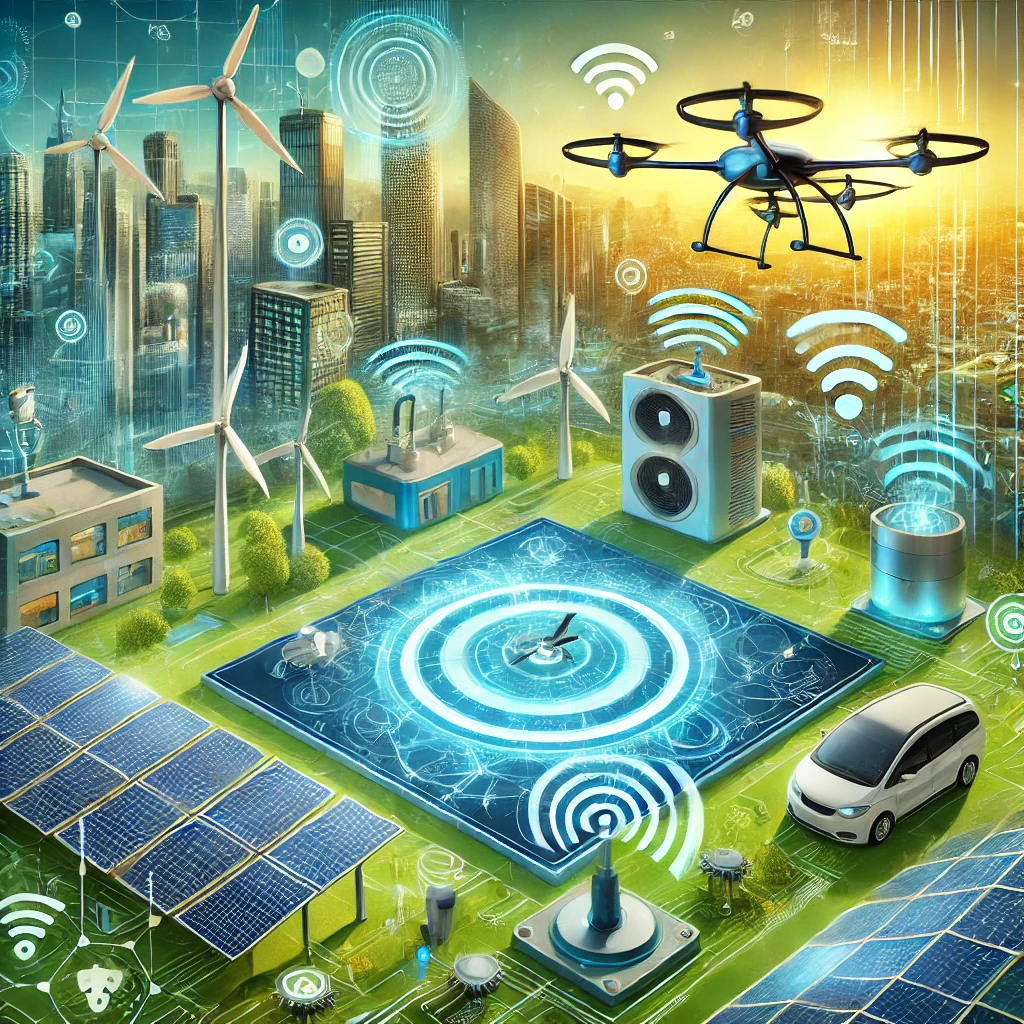Energy harvesting and wireless power transfer (WPT) are transformative technologies that are changing the way we generate, transmit, and use electricity. These advancements have the potential to significantly alter power systems, making them more efficient, sustainable, and free from the constraints of wires. They are particularly useful for powering IoT devices and eliminating the need for wired charging, helping to create a more connected and sustainable world.
What is Energy Harvesting?
Energy harvesting is the process of collecting ambient energy from the environment and converting it into electrical power. This energy can come from various sources such as light, heat, vibrations, or radio waves. The main objective is to power devices, especially those that require low amounts of energy, without relying on traditional batteries or wired connections.
Common Energy Harvesting Sources:
- Solar Energy: Capturing sunlight using photovoltaic cells.
- Thermal Energy: Converting heat differences into electricity with thermoelectric generators.
- Vibration Energy: Using piezoelectric materials to harness mechanical vibrations.
- Radio Frequency (RF) Energy: Collecting energy from electromagnetic waves emitted by wireless devices.
Applications of Energy Harvesting:
- IoT Devices: Powering sensors in smart homes, cities, and industries.
- Wearable Technology: Providing energy to fitness trackers, smartwatches, and medical devices.
- Remote Monitoring: Enabling long-term operation of environmental and structural health sensors in hard-to-reach areas.
What is Wireless Power Transfer (WPT)?
Wireless power transfer involves transmitting electrical energy from a power source to a device without physical connections. This is done using electromagnetic fields or waves, which eliminate the need for wires and offer convenience and flexibility for powering devices in various environments.
Types of Wireless Power Transfer:
- Inductive Coupling: Uses magnetic fields between coils to transfer energy, common in wireless charging pads for smartphones and electric toothbrushes.
- Resonant Inductive Coupling: A more efficient form of inductive coupling that allows energy transfer over medium distances, used in charging electric vehicles (EVs) and powering industrial equipment.
- Radio Frequency (RF) Energy Transfer: Transfers energy using radio waves, suitable for low-power devices like sensors and IoT gadgets.
- Laser Power Transfer: Uses lasers to transmit energy over long distances, applicable in space technology and for powering drones.
The Intersection of Energy Harvesting and WPT
While energy harvesting focuses on using ambient energy, WPT deals with delivering energy wirelessly. Together, these technologies can create self-sustaining, wireless-powered systems.
Example Synergy:
A network of IoT sensors might harvest ambient RF energy during normal operation but switch to WPT when higher power is needed.
Benefits of Energy Harvesting and Wireless Power Transfer
- Energy Efficiency:
- Decreases reliance on traditional power sources.
- Reduces energy waste through precise power delivery.
- Sustainability:
- Encourages the use of renewable energy sources like solar and thermal.
- Reduces battery waste by enabling battery-less devices or extending battery life.
- Convenience:
- Eliminates the need for wires and frequent battery replacements.
- Improves usability in applications like wireless EV charging.
- Enables New Applications:
- Powers devices in remote or changing environments, such as medical implants or drones.
- Supports the development of smart cities and connected devices.
Challenges in Energy Harvesting and WPT
- Limited Energy Output:
- Many energy harvesting methods produce small amounts of power, suitable only for low-energy devices.
- Efficiency Losses:
- WPT systems often encounter energy losses, especially over long distances or in non-resonant conditions. Cost and Complexity
Developing and implementing these technologies can be costly and technically demanding.
Regulatory Barriers
RF-based Wireless Power Transfer (WPT) must adhere to stringent regulations to prevent interference with communication systems.
Innovations and Emerging Trends
Ultra-Efficient Materials
Progress in piezoelectric and thermoelectric materials is enhancing the efficiency of energy harvesters.
5G-Enabled Energy Harvesting
Utilizing 5G networks to capture ambient RF energy for Internet of Things (IoT) devices.
Dynamic WPT Systems
Creating systems capable of wirelessly powering moving vehicles or robots.
Hybrid Systems
Combining various energy harvesting methods with WPT to develop robust power solutions.
Space-Based Applications
Employing wireless power transfer with lasers for space exploration and satellite networks.
Real-World Applications
Smart Cities
- Energy-harvesting sensors for traffic monitoring and air quality analysis.
- Wireless charging for public transport and electric buses.
Healthcare
- Implanted medical devices powered by body heat or external WPT systems.
- Wearable health monitors with continuous power from motion or light.
Consumer Electronics
- Wireless charging stations for smartphones, laptops, and other gadgets.
- Energy-harvesting wearables like smartwatches and fitness trackers.
Industrial Automation
- Remote monitoring of equipment powered by vibration energy harvesters.
- WPT for powering robots in manufacturing environments.
Transportation
- Wireless EV charging pads embedded in roads or parking spaces.
- Harvesting energy from vehicle vibrations for onboard sensors.
Future Prospects
Energy harvesting and WPT are set to play a vital role in achieving sustainable and efficient energy systems. As technology evolves, we can anticipate:
Increased Efficiency
Innovations in materials and designs will enhance energy conversion rates and transmission efficiency.
Broader Adoption
Costs will decline as the technology matures, making it accessible to more industries.
Integration with Renewable Energy
These technologies will complement renewable energy systems, improving their usability and reliability.
Conclusion
Energy harvesting and wireless power transfer represent a significant shift in how we generate, deliver, and utilize energy. By enabling sustainable, untethered power solutions, these technologies are driving advancements across various sectors, from healthcare to transportation. Despite existing challenges, ongoing innovation and collaboration will unlock their full potential, paving the way for a future where energy is more efficient, accessible, and environmentally friendly.

